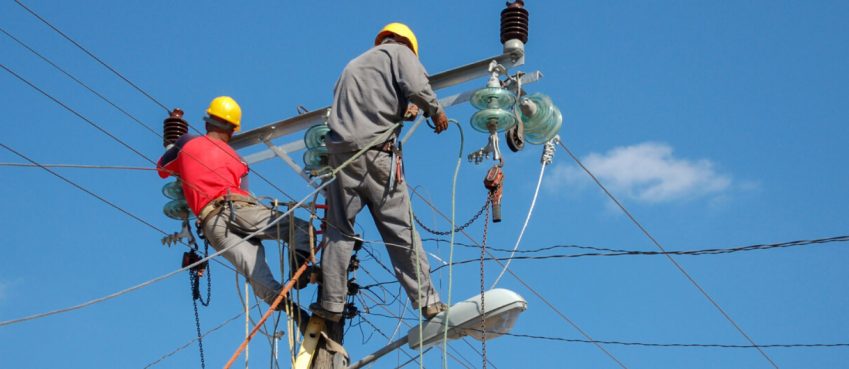
Keeping your phone charged while out and about is essential. Your phone is how you stay connected with your family and friends and how you access the internet on-the-go.
There are many different ways to keep your phone charged while running errands or on vacation. Each of these methods has its pros and cons, and you can find the best one to suit your needs.
Phones are more than a device to call people with; they are used to get from one place to another with maps and post those Instagram photos from your beach vacation to make all of your followers insta-jealous.
The cost can vary between these devices and vary in convenience based on your location or activity. Find the one that suits you the best and make it work for you.
Here are 10 ways to charge your phone while on-the-go:
Portable Power Bank
A portable power bank is the most obvious method of charging your phone while running errands or traveling. They are convenient and fit inside a backpack or purse without taking up much space. By bringing a power bank with you, you won’t have to rely on outlets or other people to ensure your phone has enough power.
Simply, remembering to charge the power bank and take it with you is important for this device. Most models will charge your phone more than one full charge, and you will only have to remember to charge it again and put it back in your purse or backpack.
Also read: Best 10 Semrush Alternative For 2025 (Free & Paid)
Wireless Chargers
Wireless chargers are available from most retailers that sell phone accessories, and they will give you the convenience of charging your phone without the hassle of carrying around an additional cord to plug in your phone.
If you have multiple devices you need to charge, you won’t have to worry about grabbing the correct cord or adapter to keep your devices up and running. Wireless chargers won’t work with every phone case or every phone. Before purchasing a wireless charger, make sure your phone is compatible.
Wireless Charging from Other Phones
Like the category above, many new phones have a feature that will allow them to use their phone to charge another person’s phone. If you only need a small boost to make a call or text, this will be effective, but it cannot replace a full charge.
This method is only a temporary solution to get a little extra juice to make it home or to a location with a power outlet. A stranger may be able to help charge your phone, but make sure not to kill theirs in the process.
Power Stations
Many malls and airports have installed power stations to accommodate the growing number of people charging their phones while away from home.
These stations will often have multiple power outlets or USB connections to allow a dozen or more devices to charge at once.
These stations can fill up quickly, especially just before a flight, making them somewhat unreliable. If you intend to use a power station, you may need to claim your spot early or keep an eye out for an open port.
Exchangeable Power Banks
Exchangeable power banks are becoming more popular in public areas and offer a small power bank, complete with cords and adapters for a flat fee.
Once you purchase the device, you can find one of the machines and exchange the dead power bank for a fully charged one when it is dead.
Exchange locations are often found in theme parks, malls, airports, and other public buildings. By making them widely available, they are a simple solution to keep your phone charged while out and about.
Some locations will only offer one brand of the charger, and if it isn’t the one you purchased, you may find yourself needing to spend the money on another device.
Solar Charger

When hiking or going out of the city, it can be challenging to keep your phone charged. A solar charger is an easy solution to charging your phone when away from power outlets. Solar chargers can be stored in a backpack or a purse just like a regular power bank and can be recharged without needing a power outlet.
This type of charger will only work if you are outside, and it is during the day. Some chargers will only charge while they are in direct sunlight, and others will store power for later use.
Also read: New Bethesda’s Fallout 5: Is It Coming Or Not? Answered
Battery Case
Most phone models will have a battery case option for your phone. You can charge the case and then flip a switch to charge your phone. Your phone is your lifeline to the outside world and the only camera that most people own. Ensure you can capture those stunning landscapes on your hikes by keeping your phone charged.
Battery cases are bulky and add weight to your phone. If you are close to home or another source of power, a battery case may not be the best solution. These are best suited for when you will spend a longer period of time away from home and don’t mind the added weight.
Travel Backpack with Built-in Charger
An alternative to a separate solar charger is to have one built into your backpack. As you walk, the solar panel absorbs the sunlight and will give you the power you need to charge your phone. These backpacks serve multiple purposes and allow you to carry your belongings and keep your phone charged.
The cons of this charger are similar to the separate solar charger. The panel needs to be exposed to sunlight for it to work, and it may or may not store power for later use.
Generator for Camping
If you are camping at a site that allows generators, you can use the generator to keep your phone and other devices charged.
A generator will have more power than a regular outlet, so you should pack an adapter to make sure it is safe to charge your phone with the generator. It is also recommended that you don’t overcharge your phone and damage the battery.
Generators are large and bulky and should only be used when there are no other options. It can be dangerous to run a generator to charge a small device, so be cautious and read the warning labels.
Also read: How To Make $5000 In A Month? 20+ Easy Ways To Make 5K Dollar Fast + Tips!
Keep Charging On

Today’s technology has everyone needing to keep their devices charged and ready to go at a moment’s notice. The number of functions a smartphone has increased with every update and will continue to grow as time goes on.
Each of these charging methods has its benefits, and all of them can help keep your devices charged while you are out running errands or on a nature walk in the park.
Top 10 News
-
01
[10 BEST] AI Influencer Generator Apps Trending Right Now
Monday March 17, 2025
-
02
The 10 Best Companies Providing Electric Fencing For Busines...
Tuesday March 11, 2025
-
03
Top 10 Social Security Fairness Act Benefits In 2025
Wednesday March 5, 2025
-
04
Top 10 AI Infrastructure Companies In The World
Tuesday February 11, 2025
-
05
What Are Top 10 Blood Thinners To Minimize Heart Disease?
Wednesday January 22, 2025
-
06
10 Top-Rated AI Hugging Video Generator (Turn Images Into Ki...
Monday December 23, 2024
-
07
10 Top-Rated Face Swap AI Tools (Swap Photo & Video Ins...
Friday December 20, 2024
-
08
10 Exciting iPhone 16 Features You Can Try Right Now
Tuesday November 19, 2024
-
09
10 Best Anatomy Apps For Physiologist Beginners
Tuesday November 12, 2024
-
10
Top 10 Websites And Apps Like Thumbtack
Tuesday November 5, 2024







